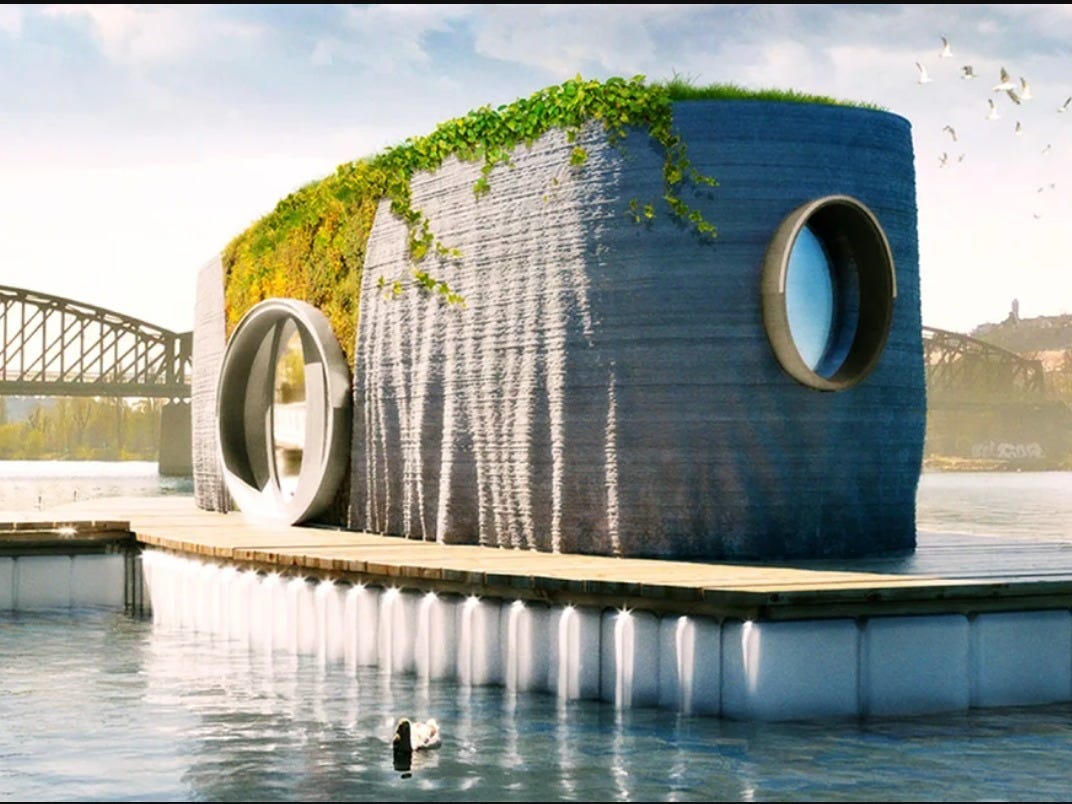- Designers in the Czech Republic are working on the country’s first 3D-printed tiny home.
- The structure can be built in only 48 hours, with the help of a robot called Scoolpt.
- The tiny home also floats on a pontoon, but can sit on land, and is largely self-sustaining.
- Visit Business Insider’s homepage for more stories.
A tiny home with a view will soon be available in the Czech Republic. The design, Prvok, will be the first 3D-printed home in the Czech Republic, and will float on a pontoon, though it’s also able to stand on land. It’s innovative in more ways than one; The structure will be built in only 48 hours, and can save up to 50% of the building costs of conventional buildings, its proponents say.
Creators Michal Trpak and the Erste group have started putting the concept into production, with 3D printing happening this month. They are clear that they hope the project will “change the construction industry forever,” making custom homes and construction more affordable and less wasteful than traditional methods.
Here’s Prvok being printed, and what the finished product might look like.
Prvok is built using Scoolpt, a robot arm used in auto manufacturing.

Using 3D printing technology, the house can be built about seven times faster than using traditional methods.

It can print about six inches per second, for 48 hours total to construct the 463-square-foot home.

25 workers total are needed to complete the house, compared to an average of 65 workers on a typical build.

Scoolpt uses a new type of concrete for this printing with fibers that form organic shapes more easily.

After 28 days, the concrete hardens completely to the equivalent of a typical bridge.

3D printing also eliminates at least 20% of carbon dioxide emissions from traditional construction, which accounts for nearly half of total emissions in the country.

"In the future, the owners can crush the building once it has run its useful life, and print it again with the same material directly on the location," sculptor Michal Trpak said.

A sketch shows what the interior of the home, which is being built this month, will look like.

The house will have three rooms: a bedroom, living room with a kitchen, and bathroom.

The house is equipped with green technology, like a recirculation shower and reservoirs for drinking and utility water.

These additions make the house, which is designed to last at least 100 years, partially self-sufficient.

It's designed for year-round habitation in the city, country, or on the water, and the first model will be produced later this month.


